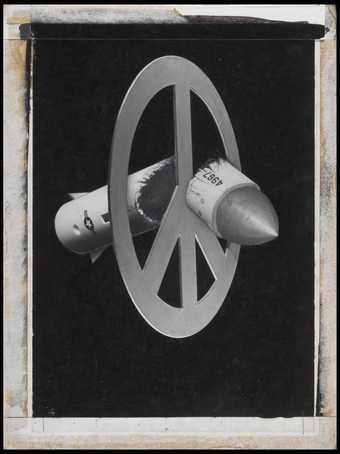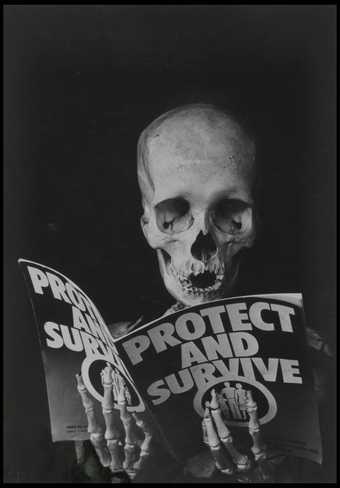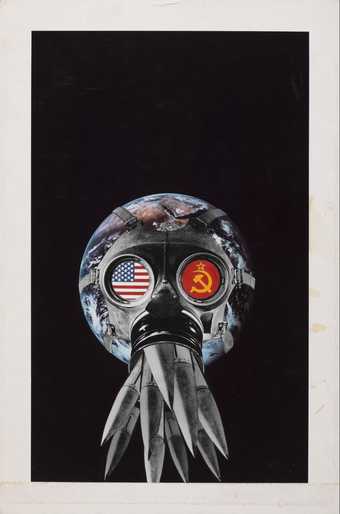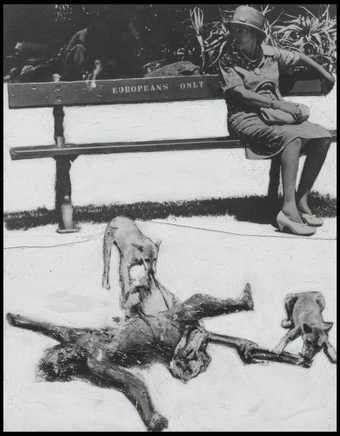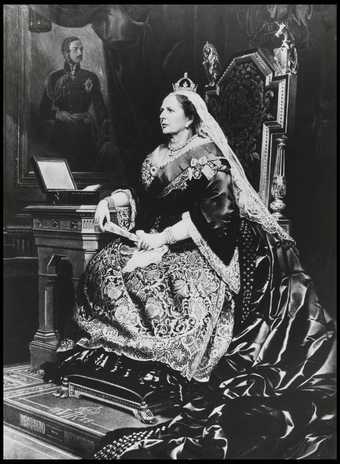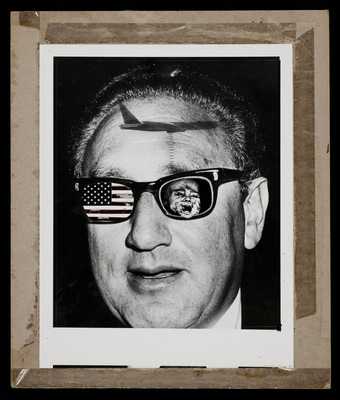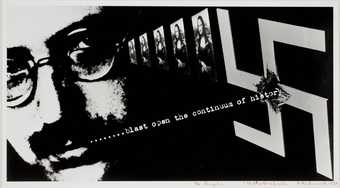I wanted to see if I could actually make a book. There wasn’t just a collection of images, not a catalogue but is an actual story about the world. There’s absolutely no language except on the back cover where the world ‘At Earth’ is written in about 40 different languages. So, the idea is that you read it like you would language because it’s made up of photo montages.
Something that’s gone through all my work for years is the image of the human face. Most images are the people that are actually being affected by the subjects in the book; by global warming, by military, by police, by the state. There’s a resilience in the faces, there’s a strength in enduring what’s going on. The images from this time are very, very simple and direct and millions of children are dying every year. We’re spending more and more on weaponry. We know those things are happening so why not just put the two together and make an image of it, why not make in an image what we know in our heads is the reality. I don’t mind if it looks simplistic or something like that, I’m quite happy about that. I was doing pictures about trident missiles 40 years ago and now this country is reconditioning the same trident missiles 40 years later. The images are still relevant so I think it’s important to show a sort of history within the work.
This is the original of one of the images that’s in the book and again it’s got the…it’s got the crosshairs from smart bombs. What the image shows is very simply what they call collateral damage is people.
I mean, I’ve always been really concerned with the materiality of images, not just the smoothness of a photograph but the actual physicality of a piece of paper that’s been scrunched up and worked on. Here there’s an image of the earth and it’s got iron filings put onto it. I started messing around with globes, poring stuff onto them and then photographing it. If it’s a hand breaking a missile, if it’s the earth, everyone knows those things so then you can start mucking around with it and start pushing it. It’s always going to be a trace of that image. That’s why the book’s called At Earth, you don’t need the word ‘Earth’ on the cover, you can just show it.
I mean, I think it’s important to show in galleries but it’s also important to get it out in the street so it can be used as a tool by people that are in struggle.
There is this sense that there’s something happening globally, which is why I think it’s important to try and develop visual forms that are global, that will actually affect people across countries. It’s about people acting in the world rather than sitting back and thinking they can’t do anything.



